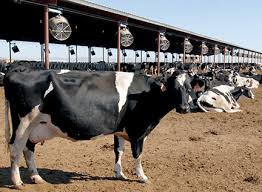ZADF sets milk production target at 108 million litres
The country’s milk output in 2022 rose 14,81 percent to 91,39 million litres from the 79,61 million litres recorded in the same period prior year, the Ministry of Lands, Agriculture, Fisheries, Water and Rural Settlement dairy services department has said.
Ernest Muzorewa, national chairman of the Zimbabwe Association of Dairy Farmers (ZADF), told Business Weekly that, “Main drivers have been improved nutrition and increased herd from imported heifers and good management as result of farmer training programmes.”
ZADF began a local heifer breeding program on July 19, 2022, as a step to improve the genetic quality of the country’s milking herd and supplement current efforts to cut back on the importation of heifers.
According to Muzorewa, in 2023 the country expects a 20 percent increase from 91 million litres in 2022 to about 108 million litres.
Zimbabwe’s raw milk production has reached 76 percent of the annual requirement with the Zimbabwe Agricultural Growth Programme (ZAGP) believing the country is on its way to milk sustainability.
The country requires 120 million litres annually.
As more farmers enter the dairy industry and the herd has been augmented by imported heifers, milk production has been rising. Official data shows that milk intake by processors surged by 15 percent to 82,51 million liters from 72,67 million liters in 2021.
Producers’ retailed milk increased by 29 percent to 8,88 million liters from 6,94 million liters the previous year.
The government has continued to provide money and other sorts of support since it is particularly interested in the expansion of the dairy industry.
“The increase is to be achieved through promoting on farm feed production and formulation in order to augment nutrition and reduce costs, and also to promote improved efficiency at farm level,” Muzorewa said.
Efficient utilisation of funding availed by the Ministry of Finance and Economic Development from proceeds of the 5 percent levy on imported dairy products is also seen as a boost to local milk production in order to move towards sustainability and self-sufficiency.
Incentives to promote dairy include presidential and command silage schemes as well as subsidised semen through Transforming Zimbabwe’s Dairy Value Chain for the Future (TranZDVC) project.
“We also aim to facilitate vaccine availability mostly in case of foot and mouth disease and also try to make government reduce its duty-free milk powder imports policy.
The estimated dairy herd for 2022 is at 53 250 and of all those cattle, the estimated number of milking cows is 28 072, mind you, these are still estimates,” Muzorewa concluded.
On the other hand, through the Ministry of Land, Agriculture, Fisheries, Water, and Rural Development, the association is advocating for critical stakeholders and the technical team of the association to examine milk pricing.-ebusinessweekly











